President Trump says he's improving after chief of staff says he faces 'critical' 48 hours in COVID battle
Trump himself offered an upbeat assessment Saturday evening in a video from Walter Reed National Military Medical Center. While sounding winded, the president said he was beginning to feel better and hoped to “be back soon.”
Share:
More Stories
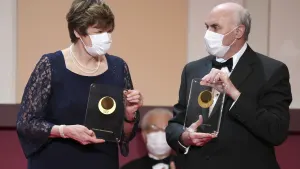
Nobel in medicine goes to 2 scientists whose work enabled creation of mRNA vaccines against COVID-19
584ds ago1:25
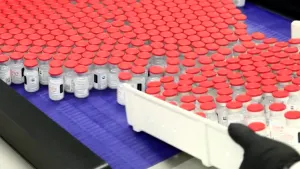
Pharmacies say they have not received orders for newest COVID booster
589ds ago0:21
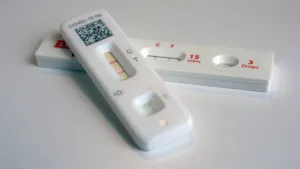
Biden administration announces $600M to produce COVID tests and will reopen website to order them
596ds ago0:41
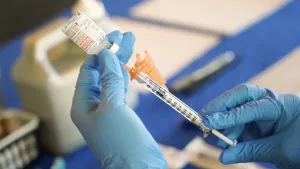
Gov. Hochul: Updated COVID-19 vaccine to be available in NY in the coming days
603ds ago2:13
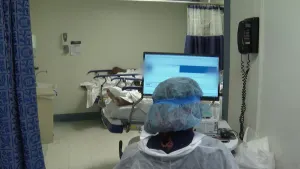
NYSDOH: COVID numbers up with new variant accounting for 17% of new cases
637ds ago2:30
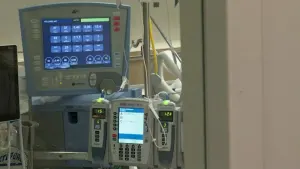
NYSHD: Hospitalizations caused by COVID increase by 22% in a week
645ds ago
Nobel in medicine goes to 2 scientists whose work enabled creation of mRNA vaccines against COVID-19
584ds ago1:25

Pharmacies say they have not received orders for newest COVID booster
589ds ago0:21

Biden administration announces $600M to produce COVID tests and will reopen website to order them
596ds ago0:41

Gov. Hochul: Updated COVID-19 vaccine to be available in NY in the coming days
603ds ago2:13

NYSDOH: COVID numbers up with new variant accounting for 17% of new cases
637ds ago2:30

NYSHD: Hospitalizations caused by COVID increase by 22% in a week
645ds agoPresident Donald Trump went through a “very concerning” period Friday and faces a “critical” next two days in his fight against COVID-19 at a military hospital, his chief of staff said Saturday - in contrast to a rosier assessment moments earlier by Trump doctors, who took pains not to reveal the president had received supplemental oxygen at the White House before his hospital admission.
Trump himself offered an upbeat assessment Saturday evening in a video from Walter Reed National Military Medical Center. While sounding winded, the president said he was beginning to feel better and hoped to “be back soon.”
Hours earlier chief of staff Mark Meadows told reporters outside the hospital, “We're still not on a clear path yet to a full recovery.”
The changing, and at times contradictory accounts, created a credibility crisis for the White House at a crucial moment, with the president’s health and the nation’s leadership on the line. With Trump expected to remain hospitalized several more days and the presidential election looming, his condition is being anxiously watched by Americans.
Moreover, the president's health represents a national security issue of paramount importance not only to the functions of the U.S. government but to countries around the world, friendly and otherwise.
Saturday's briefing by Navy Commander Dr. Sean Conley and other doctors raised more questions than it answered. Conley repeatedly refused to say whether the president ever needed supplemental oxygen, despite repeated questioning, and declined to share key details including how high a fever Trump had been running before it came back down to a normal range. Conley also revealed that Trump had begun exhibiting “clinical indications” of COVID-19 on Thursday afternoon, earlier than previously known.
Conley spent much of the briefing dodging reporters' questions, as he was pressed for details.
“Thursday no oxygen. None at this moment. And yesterday with the team, while we were all here, he was not on oxygen,” Conley said.
But according to a person familiar with Trump’s condition, Trump was administered oxygen at the White House on Friday morning, well before he was transported to the military hospital by helicopter that evening. The person was not authorized to speak publicly and spoke to The Associated Press only on condition of anonymity,
Conley said that Trump's symptoms, including a mild cough, nasal congestion and fatigue “are now resolving and improving,” and said the president had been fever-free for 24 hours. But Trump also is taking aspirin, which lowers body temperature and could mask or mitigate that symptom.
“He’s in exceptionally good spirits,” said another doctor, Sean Dooley, who said Trump's heart, kidney, and liver functions were normal and that he was not having trouble breathing or walking around.
Trump is 74 years old and clinically obese, putting him at higher risk of serious complications from a virus that has infected more than 7 million people nationwide and killed more than 200,000 people in the U.S.
Meadows himself had insisted Friday morning that Trump had only “mild symptoms" as the White House tried to project an image of normalcy. It was unclear whether Trump already had received oxygen when Meadows spoke.
“President Trump remains in good spirits, has mild symptoms and has been working throughout the day,” press secretary Kayleigh McEnany said late in the day on Friday. She said Trump had only been sent to Walter Reed as a precaution.
Trump's administration has been less than transparent with the public throughout the pandemic, both about the president’s health and the virus' spread inside the White House. The first word that a close aide to Trump had been infected came from the media, not the White House. And aides have repeatedly declined to share basic health information, including a full accounting of the president’s symptoms, what tests he’s undertaken and the results.
In a memo released late Friday, Conley did report that Trump had been treated at the hospital with remdesivir, an antiviral medication, after sharing that he'd taking another experimental drug at the White House.
Conley declined to say when Trump had last been tested before he was confirmed to have COVID-19 late Thursday. He initially suggested that Trump was 72 hours into the diagnosis - which would mean that he was confirmed infected Wednesday. Conley later clarified that Trump was administered an accurate test for the virus on Thursday afternoon, after White House aide Hope Hicks was confirmed to be positive and Trump exhibited “clinical indications” of the virus.
The White House has said Trump was expected to stay at the hospital for “a few days” and would continue to work from its presidential suite, which is equipped to allow him to keep up his official duties. In addition to accessibility to tests and equipment, the decision to move to the hospital on Friday was made, at least in part, with the understanding that hurrying there later could send a worrying signal if he took a turn for the worse.
On Saturday, Conley said Trump’s blood oxygen level was 96%, which is in the normal range. The two experimental drugs he has received, given through an IV, have shown some promise against COVID-19. On Friday, he was given a single dose of a drug Regeneron Pharmaceuticals Inc. is testing to supply antibodies to help his immune system fight the virus.
Friday night, he began a five-day course of remdesivir, a Gilead Sciences drug currently used for moderately and severely ill patients. The drugs work in different ways - the antibodies help the immune system rid the body of virus and remdesivir curbs the virus’ ability to multiply.
“We’re maximizing all aspects of his care,” attacking the virus in multiple ways, Conley said. “I didn’t want to hold anything back if there was any possibility it would add value to his care.”
He noted that in many cases, COVID-19 can become more dangerous as the body responds. “The first week of COVID, and in particular day seven to 10, are the most critical in determining the likely course of this illness,” he said.
At the same time, the White House has been working to trace a flurry of new infections of close Trump aides and allies. Attention is focused in particular on last Saturday’s White House event introducing Trump’s Supreme Court nominee. That day, Trump gathered more than 150 people in the Rose Garden, where they mingled, hugged and shook hands - overwhelmingly without masks. There were also several indoor receptions, where Trump’s Supreme Court pick, Judge Amy Coney Barrett, her family, senators and others spent time in the close quarters of the White House, photographs show.
Among those who attended and have now tested positive: former New Jersey Gov. Chris Christie, White House counselor Kellyanne Conway, the president of the University of Notre Dame, and at least two Republican lawmakers - Utah Sen. Mike Lee and North Carolina Sen. Thom Tillis. The president's campaign manager, Bill Stepien, and the head of the Republican National Committee, Ronna McDaniel, have also tested positive, though they were not at the event.
Despite its failure to protect the president and senior staff from infection, the White House has given no indication that it intends to make any major protocol changes, such as mandating that everyone wears a mask.
Meadows, the chief of staff, accompanied the president to the hospital aboard Marine One, the kind of small, enclosed space where experts say the virus easily spreads. Those aboard did wear masks.
While Vice President Mike Pence is currently off the campaign trail preparing for the coming week’s vice presidential debate, he and his staff are operating under a “business as usual” approach. He’s still planning to travel to Arizona on Thursday, Indiana on Friday and Florida on Saturday for events instead of isolating himself after potential exposure and to protect himself from contracting the virus anywhere else.
__
Colvin and Miller reported from Washington. Associated Press chief medical writer Marilynn Marchione contributed to this report from Milwaukee.
(Copyright 2020 The Associated Press. All rights reserved. This material may not be published, broadcast, rewritten or redistributed without permission.)
More from News 12
3:20

Long Islanders react to the naming of the Pope Leo XIV
1:30

STORM WATCH: Periods of rain through Friday, chance for thunderstorms
1:32

Police: Florida man leads officers on chase across Suffolk County
1:39

Community weighs in on plans to improve safety on notorious stretch of Southern State Parkway
1:45

First-ever Angel Baby Gala held for mothers who lost a child
1:24
